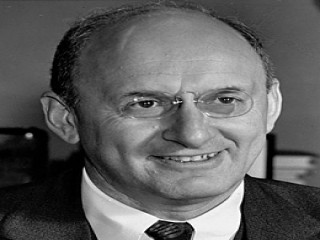
Henry Morgenthau Jr. biography
Date of birth : 1891-05-11
Date of death : 1967-02-06
Birthplace : New York City, New York, US
Nationality : American
Category : Politics
Last modified : 2011-06-11
Credited as : Politician, secretary of the treasury,
Henry Morgenthau, Jr., was born in New York City on May 11, 1891, into a prosperous family of German-Jewish ancestry. The senior Morgenthau, who had become wealthy through real estate investments, was active in Democratic party affairs and in sponsoring various social welfare projects in the city. Henry Morgenthau, Jr., attended Phillips Exeter Academy and then Sachs Collegiate Institute in New York City before entering Cornell University. Morgenthau left Cornell after three semesters to recuperate from typhoid fever. He again enrolled in Cornell, this time to study agriculture. But he soon left on a trip to the Pacific Coast to investigate different kinds of farming at firsthand. When he returned more excited than ever about a career in farming, his father bought several hundred acres for him in Dutchess County in upstate New York, which in succeeding decades became a highly successful and apple-growing farm.
Morgenthau's friendship with Franklin Roosevelt began in 1915, when Roosevelt, hosting Morgenthau at his neighboring Dutchess County estate at Hyde Park, tried unsuccessfully to persuade the young agriculturalist to run for sheriff. The next year Morgenthau married Elinor Fatman, whom he had known since childhood. The Morgenthaus had two sons and a daughter—Henry III, Robert, and Joan—all of whom became well known in their own right.
Morgenthau's first involvement in public service came during World War I, when he helped organize agricultural production in Dutchess County and persuaded U.S. Food Administrator Herbert Hoover to transfer 1,500 tractors to France. After the war Morgenthau became increasingly active in county and state Democratic party affairs and undertook publication of an agricultural weekly in which he championed such causes as soil conservation, rural electrification, and aid to rural education.
Morgenthau worked hard to elect Roosevelt governor of New York State. In 1929, after Roosevelt's victory, he went to Albany as a member of the state agricultural commission. Following Roosevelt's reelection in 1930, Morgenthau became conservation commissioner. With Harry Hopkins, Morgenthau devised a plan for combining reforestation projects with work relief for the jobless. This became a model of its kind as unemployment skyrocketed during the early years of the Great Depression. In 1932 Morgenthau again helped Roosevelt get elected, this time to the presidency, and again Roosevelt brought Morgenthau with him to the seat of government.
Morgenthau wanted very much to become secretary of agriculture, but he accepted appointment as head of the Farm Credit Administration, which handled most of the New Deal's efforts to aid debt-ridden farmers. During the year and a half he remained at Farm Credit, Federal loans to farmers increased more than 10-fold.
By November 1934, when Morgenthau became secretary of the treasury, the Roosevelt administration had shifted control of money and credit from New York and private financial combines to Washington and the federal government. Always close to Roosevelt, Morgenthau now became an even more central figure in the New Deal. Basically a fiscal conservative, Morgenthau nevertheless went along with mounting federal deficits as the Roosevelt administration struggled to meet the nation's relief needs and to revive the economy. In 1937, however, Morgenthau finally persuaded Roosevelt to make substantial reductions in federal spending, a move that helped trigger the "Roosevelt recession" of the late 1930s.
Morgenthau was an early and vigorous champion of collective security arrangements to resist the growing aggressiveness of Nazi Germany. After the outbreak of World War II in Europe in the fall of 1939, Morgenthau battled within the Roosevelt administration against neutralists and "America First" military strategists to clear British and French purchases of American-made war material and to step up military production, especially of airplanes. Until the establishment of the Lend-Lease Program in 1941, Morgenthau managed the bulk of American aid to Great Britain.
After Pearl Harbor and America's entrance into the war, Morgenthau administered the biggest and most rapid expansion of federal expenditures in the nation's history. By 1945 total federal outlays, which had been $7.1 billion during Morgenthau's first year at the Treasury, had reached $93.7 billion. Morgenthau's main contribution to the intensifying postwar planning debate within the Roosevelt administration was the much-criticized "Morgenthau Plan," which envisioned not only the disarmament of Germany but its deindustrialization as well. It was largely President Harry Truman's disapproval of the Morgenthau Plan that prompted Morgenthau's angry resignation in July 1945.
In retirement Morgenthau devoted much of his time to philanthropic projects. He was chairman of the United Jewish Appeal (1947-1950), and in the early 1950s he was chairman of the board of the American Financial and Development Corporation for Israel, which handled a $500 million Israeli bond issue. On Feb. 6, 1967, following a succession of heart attacks, Morgenthau died at Poughkeepsie, N.Y.
















